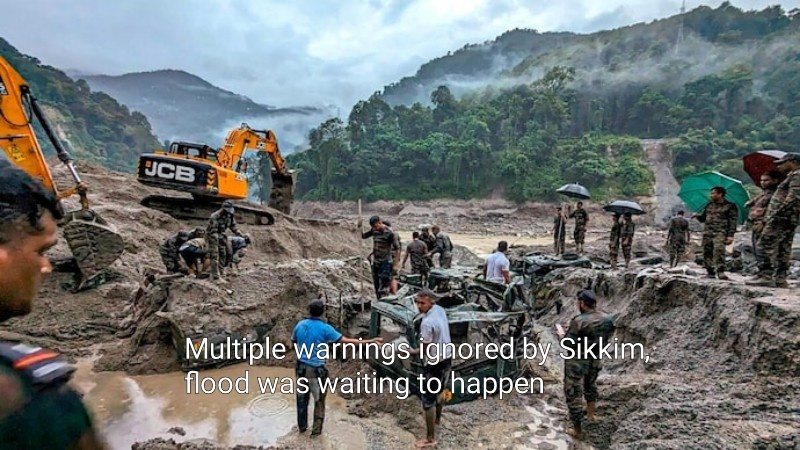
The disaster in Sikkim, which left at least 14 dead and 102 missing, wasn’t completely unexpected. Government organizations and scholars have issued numerous alerts over the past ten years about the potential for disastrous floods in Sikkim caused by glacial lake outbursts.
The Lhonak Lake in North Sikkim received its most recent word of warning in 2021, however all advice was disregarded. Then, on Wednesday, chaos reigned. Flash floods in the Teesta River basin were brought on by a cloudburst over the lake. 22,034 persons were affected by the disaster.
When the glacial lake outburst flood (GLOF) occurred on October 4, the lake’s water level rose quickly, resulting in significant damage to the districts of Mangan, Gangtok, Pakyong, and Namchi.
Glacial lake outburst floods (GLOFs) happen when melting glacier-formed lakes break open because of too much water buildup or because of triggers like earthquakes, resulting in disastrous flash floods downstream.
One of 14 potentially hazardous lakes vulnerable to GLOFs is South Lhonak Lake, which is situated in Sikkim’s far northwest.
The Lhonak glacier’s melting caused the lake, which is 5,200 meters (17,100 feet) above sea level, to form. The related glaciers’ melting is causing the lake’s size to grow quickly.
The lake’s area was drastically reduced, going from 167.4 hectares on September 28 to 60.3 hectares on October 4. Satellite pictures indicated a GLOF occurrence.

Post Your Comments